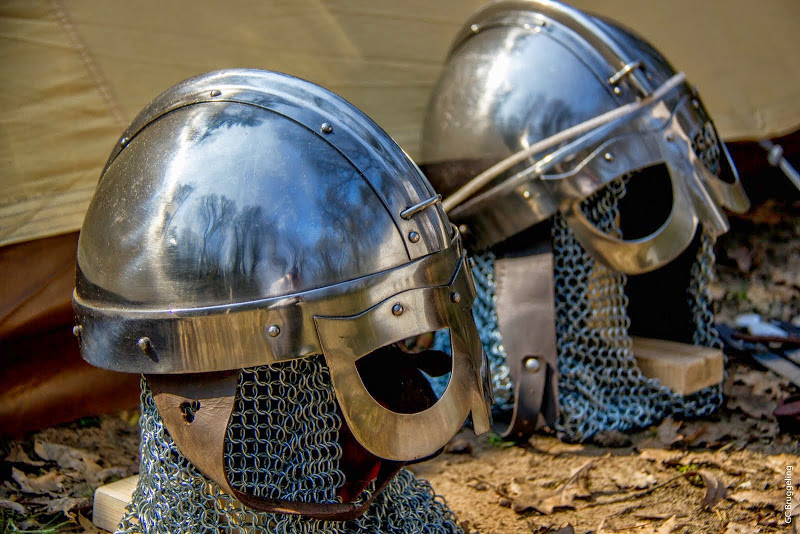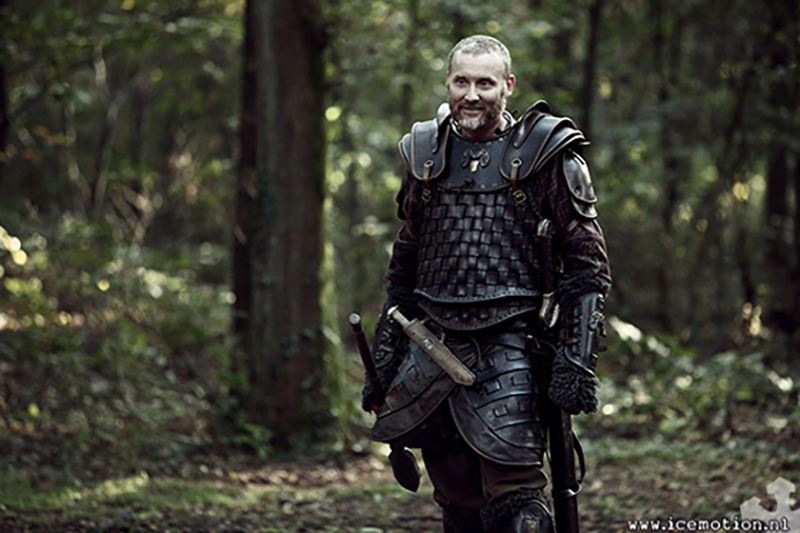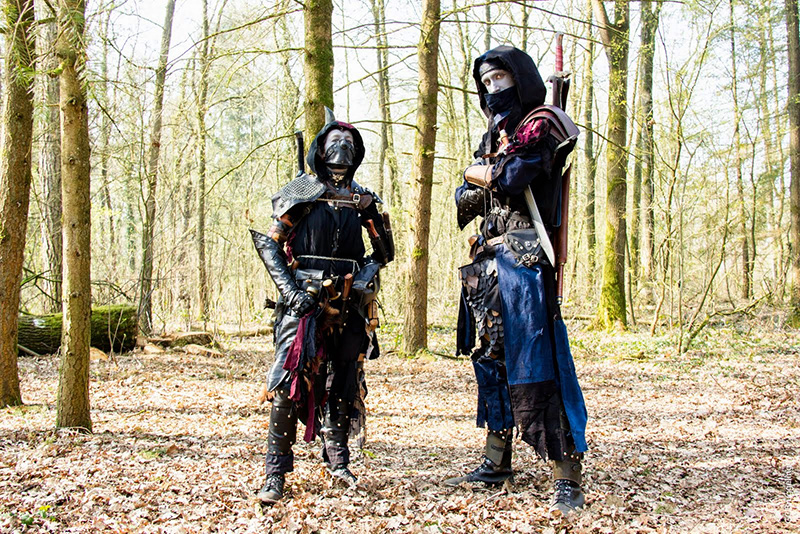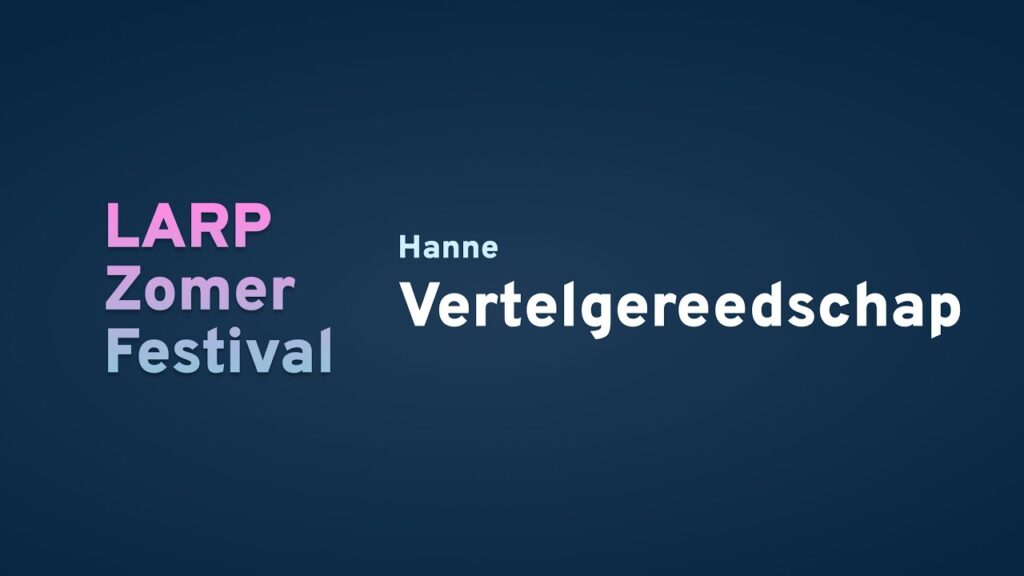Costume: Layers
Last week I told you about how you could manage your inspiration and create a costume on paper.
This week I’ll give you some tips and tricks on layers. You hear this word often at larps but why is that? And where to start with all those layers? And what are the basic layers? Read on and find out!
Happy layering! Alexjuh
People who have participated at larps for a long time and have great costumes, always mention the word “layers!” when you ask them for costume advice. But why are layers so important? And why does this make such a difference? Well, there are multiple reasons.
Layers give depth to your costume. It’s much more impressive to look at multiple layers – and see something new every time – than just a basic costume consisting of a shirt, a trouser, simple cloak and maybe some armour.
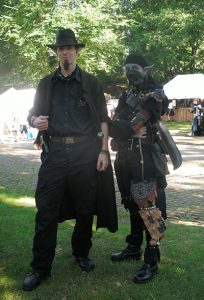
Secondly, layers give you the possibility to subtly change your costume every day. Today you wear a green shirt underneath all those layers and details, and tomorrow you wear a blue one. You might think this won’t be visible, but when done right, it will be and people will notice.
Then there is the temperature. When playing a character in both summer and winter you might want to take off or put on some layers, depending on the weather. This gives you the possibility to make yourself more comfortable.
Don’t get me wrong, it isn’t bad if you don’t have many layers. There can be a multitude of reasons why you choose not to have many layers; but if you want to get more out of your costume, I still advice: layers!
Basic clothing
The first in-game layers of your costume are basic clothing. These first layers can consist of different pieces of clothing depending on your character and of course depending on gender. These are the most common first layers:
- A shirt
- A trouser
- A pair of shoes
- A dress
- A skirt (or kilt)
- A pair of tights
- A pair of gloves
As you can see this is clothing you wear every day; the same goes for your character. Take a good look at the type of larp you’re participating in to see what type of fabric you need. For larps that have a modern-day touch (post-apocalyptic, zombie, vampire, etc.) you can use your daily clothing. For futuristic larps you can use your regular clothing, but you can also search for latex, leather or other types of shiny materials. Then there is medieval- and fantasy-larps. For these types of larps people often use linen or roughly woven cotton. Then there’re the types of fabric that can almost never go wrong such as satin, silk, velvet, wool, leather and fur.
Two entries ago I told you about undergarment. That undergarment can be part of your costume as well but try to avoid it being visible.
For example: when you are at a post-apocalyptic-larp it won’t bother people that you can see thermal clothing. But that same thermal clothing can look bad when it’s seen at a low fantasy-larp.

Now we’ve come to the layers that contain the big pieces of costume. You can have two layers of these big pieces, but also more. This depends on your character but also on time (how much time do you have to prepare for the event?), how much you have to spend (it’s always about the money) and whether you actually want to wear all those layers (if you get warm quickly you might not want to have too many layers).
These are examples of those big costume pieces:
- Armour or protective gear
- A tabard or tunic
- A hat
- A coat
- A cloak
Most people wear one or two layers of those pieces of clothing. They can also help to identify your character.
For example: the guy in the rusty armour; the lady with the blue tunic; the guy with the black top hat.
Of course there is also the one-layer-in-all costume. This type of costume is very difficult to get right but some people manage it well. In this type of layer it’s all about details!
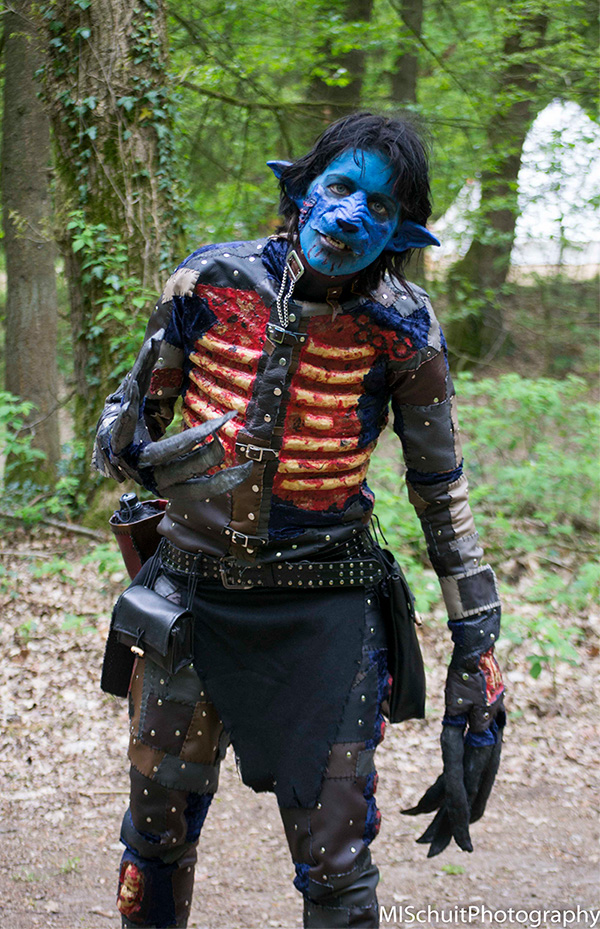
This costume consists of one layer; the trouser with leather patches, the open ribcage, the claws (which are actually gloves), the shoes and the make-up. Later in my entries I’ll show you how I created this costume.
Here’s another example:
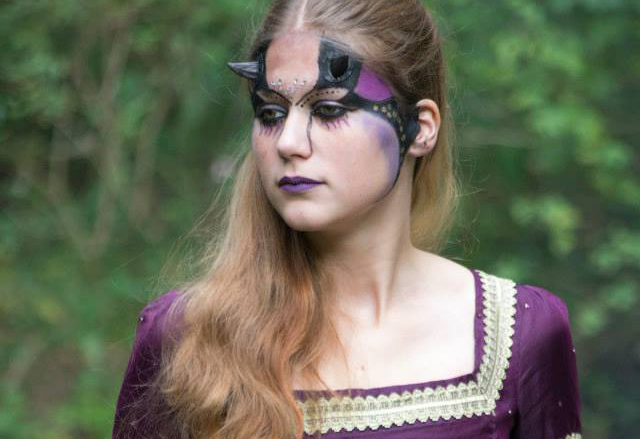
Photograph made by: Marjolein Schuit
The reason I think this one layer costume works isn’t only because of the dress but is also the make-up.
Last but not least; in this video the guys from LarpForge tell you about creating a winter costume. They talk about layers and which types of fabric you can use. They also tell a little bit about undergarment and why they’re important, connecting to one of my previous entries. The video is 25 minutes long, but worth watching!
Special mention for this entry: Karijn. Thank you for your input on this topic and for helping me with translation, grammar and filtering out little mistakes.
Next entry: Costume
Dit artikel is oorspronkelijk gepost op Alexandra’s blog (31 maart 2014) en is opnieuw beschikbaar gesteld voor LARP Platform.
Alexandra is momenteel actief met het organiseren van Dark Union, een unieke bad guy LARP in Nederland. Daarnaast is ze heel creatief meer leerbewerken onder handelsnaam Layers.
